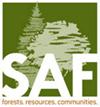Adjacency Branches Used To Optimize Forest Harvesting Subject to Area Restrictions on Clearfell
IF 1.5
4区 农林科学
Q2 FORESTRY
引用次数: 0
Abstract
Consider a forest containing units of various sizes for which a maximum clearfell area has been specified along with an associated green-up time period. For such an application it is customary to use adjacency constraints to produce a harvesting plan. These constraints control the availability for harvest of specific units relative to the harvesting of certain adjacent units. However, such constraints are difficult to formulate and often precipitate major difficulties in the implementation of the solution algorithm. A new concept, a nuclear set, is introduced. This concept allows the unit-specific aspects of the problem to be analyzed in an insightful manner. Any adjacency violation can be detected in relation to these nuclear sets. Suitable adjacency branches can be implemented to remove these violations. The form of these branches derives from the same nuclear sets. A remarkably small number of these branches are required to obtain a feasible solution. These ideas are incorporated into a column generation and constraint generation model. This new forest harvesting model solves the clearfell area restriction problem in an exact sense. Results are included for numerical trials involving simulated data representing moderately sized applications with a planning horizon of up to one rotation. The output from these trials suggests that this algorithm is suitable for large commercial applications. Several applications of 1,600 units are solved over 25 time periods with multiple green-up.邻接枝条用于优化森林采伐,但受开伐面积限制
考虑一个包含不同大小单位的森林,其中规定了最大的采伐面积和相关的绿化时间段。在这种应用中,通常使用相邻约束条件来制定采伐计划。这些约束条件可以控制特定单位的采伐量与某些相邻单位的采伐量。然而,这种约束很难制定,而且往往会给求解算法的实施带来很大困难。我们引入了一个新概念--核集。通过这一概念,可以对问题的特定单元方面进行深入分析。任何违反邻接关系的情况都可以根据这些核集进行检测。可以实施适当的邻接分支来消除这些违规行为。这些分支的形式源自相同的核集。要获得一个可行的解决方案,只需要极少量的这些分支。这些想法被纳入了列生成和约束生成模型。这种新的森林采伐模型从精确的意义上解决了伐木区限制问题。模型中包含了模拟数据的数值试验结果,这些数据代表了中等规模的应用,规划期限最长为一个轮伐期。试验结果表明,该算法适用于大型商业应用。在 25 个时间段内,通过多次绿化,解决了 1,600 个单位的若干应用问题。
本文章由计算机程序翻译,如有差异,请以英文原文为准。
求助全文
约1分钟内获得全文
求助全文
来源期刊

Forest Science
农林科学-林学
CiteScore
2.80
自引率
7.10%
发文量
45
审稿时长
3 months
期刊介绍:
Forest Science is a peer-reviewed journal publishing fundamental and applied research that explores all aspects of natural and social sciences as they apply to the function and management of the forested ecosystems of the world. Topics include silviculture, forest management, biometrics, economics, entomology & pathology, fire & fuels management, forest ecology, genetics & tree improvement, geospatial technologies, harvesting & utilization, landscape ecology, operations research, forest policy, physiology, recreation, social sciences, soils & hydrology, and wildlife management.
Forest Science is published bimonthly in February, April, June, August, October, and December.
 求助内容:
求助内容: 应助结果提醒方式:
应助结果提醒方式:


